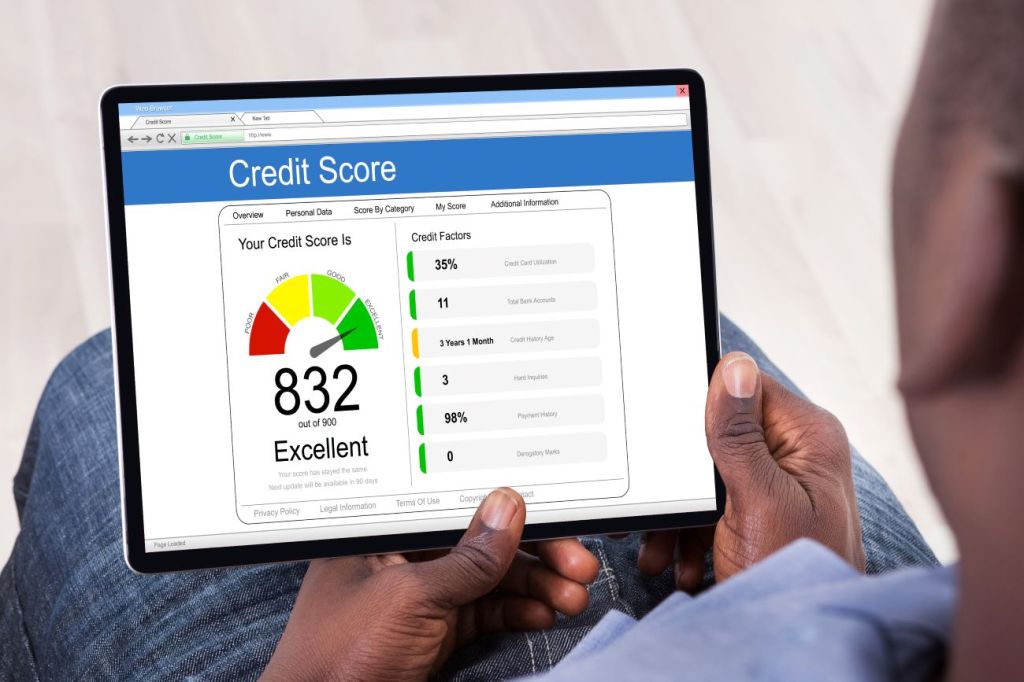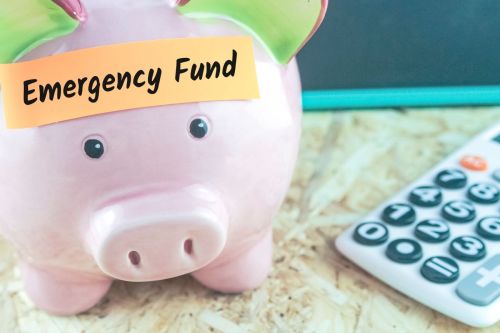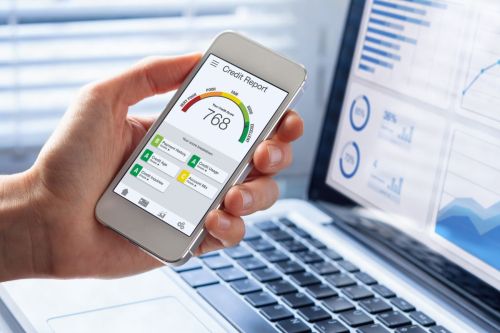Every parent wants their kids to succeed in life, whether that means having a good friend group, a great work ethic, or solid financial literacy skills. Money management for kids isn’t just about saving up for a big purchase. Kids also need to learn how credit works, and how it can be both a blessing and a curse before they enter adulthood.
By teaching your kid about money and credit before they get their own first credit card (at 18 or 19 years old, depending on the province or territory), you’re helping them build a foundation for smart budgeting and spending. You’ll also set them up to understand potential financial consequences that come with bad money habits long before these habits even start.
Need more convincing that your tween or teen should learn about credit? According to a StatsCan report released in September 2021, for every $1 of household disposable income, the average Canadian has $1.73 in credit debt. In other words, personal debt levels are rising faster than Canadians’ disposable incomes. So, the sooner you have these conversations with your kids, the better.
But don’t worry, credit basics are easier to teach than you might think. In this guide, we’ll cover types of credit; what credit, a credit score, a credit report and a credit check are; and how kids and teens can use credit to their benefit.
Key takeaways
- Credit is an amount of money available to you to borrow that you’ll have to pay back within a certain amount of time—and often with interest.
- A credit check is usually done prior to granting someone a loan.
- Credit can come in many forms, and credit cards are one of the most common types. Mortgages, personal loans, and lines of credit are other types of credit.
- Using credit responsibly can help you build a good credit history.
- Credit can help you pay for items that are hard to save up for, like a car, a post-secondary education, or a house.
- A credit report is a summary of a person’s credit and borrowing history.
- A credit score is a three-digit number that tells a credit bureau how well a person manages credit, and how risky it might be for a lender to let them borrow money.
What is credit and debt?
Simply put, credit is the amount of money you have the ability to borrow and promise to pay back, usually with interest. However, debt is the amount you owe (it could be to a bank, the government, or another person) and needs to be paid back. Explain it to your kids this way: Say you have a credit card with a limit of $1,000. That’s the amount of credit you have available to you. When you buy something with it—like a Nintendo Switch for about $400—that amount you spend is considered debt until you pay everything off.
Credit cards are among the most common types of credit, in addition to home mortgages, car loans, and student loans. While credit card balances can (and should) be paid off in full every month, debts like home mortgages and car loans are designed to be longer-term loans and can take years to pay off.
Read more about types of debt explained for teens.
How does credit work?
When teaching your tween or teen how credit works, explain that an individual (the borrower) borrows an amount of money from a bank (the lender), then must repay that sum (called the principal) in full and with interest within a specific time frame. Payments toward the principal are usually done monthly.
If borrowers do not pay back the initial loan in full, and they allow interest to build month after month, their debt will get bigger and bigger—just like a snowball rolling down a hill—and they’ll end up paying much more than the initial cost of the purchase.
The lender will usually do a credit check on the borrower’s credit history to see how likely they are to repay the loan in full and on time. If a borrower has a bad credit history, the lender may refuse to give them credit, or only offer it with a higher rate of interest. This means you could pay more for a loan than someone with a better credit history, even if you can pay the entire loan back quickly.
Next, you can explain to your tweens and teens that some loans need nothing more than a promise to pay, which are called unsecured loans. Secured loans, on the other hand, require you to guarantee certain assets, such as your house or car, for repayment. Both shorter-term credit, such as credit cards, and longer-term credit, like a home mortgage, have strings attached. Lenders charge credit fees and interest. So, get your teen to stop and think whether it’s worth paying more than the sale price for yet another pair of Chuck Taylor All Stars.
Why do you need credit?
Of course, you don’t want to completely scare off your kids from using credit. Now’s the time to explain that it can also give your kids financial power by helping them get the things they need immediately, like a car loan.
Teens should also think about building a credit history, which lenders usually consider when deciding whether to offer them a loan, credit card, or similar product. To improve their chances of getting approved for credit at a lower, more favourable annual interest rate, it’s necessary to show a good track record. And one way to do that is by using credit responsibly.

What are the different types of credit?
Here are some of the various types of credit available in Canada, and the pros and cons of each:
1. Credit cards
The most important lesson about credit cards (and any type of credit, really) is that this convenient piece of plastic is not actually free money. Explain to your kids that when they make a purchase with a credit card, they’re borrowing money from the issuer (usually a bank) to pay the vendor (like their favourite coffee shop), and the limit on their card depends on their income, credit rating, and any debt they might already have.
Credit cards are a type of “revolving credit,” meaning it lets them repeatedly borrow money up to a set limit and pay it back in full or over time. Used responsibly, credit cards can be a convenient alternative to buying things in cash—and a secure way to buy things online. But if a borrower doesn’t pay their credit card(s) in full each month by the payment due date, they’ll amass interest charges that might get harder and harder to pay down.
Credit cards can also be used to take out cash, but borrowers start paying interest on the amount right away. Credit cards are one of the highest-interest-rate ways you can borrow money; they typically charge anywhere between 10 per cent and 30 per cent. This means you’re paying for the ease and convenience of withdrawing cash with a credit card. So, your teen should exercise plenty of discipline.
2. Mortgages
Mortgages are a type of fixed loan, specifically for a home or property. Your kids should know that mortgages are also a secured loan, which means their (future) home guarantees the amount they’re borrowing and acts as security for the bank or other type of lender. If they don’t make the mortgage payments, they could lose their home.
Mortgage interest rates vary, depending on different factors, such as your credit score, the state of the economy, and what type of mortgage you get. The standard mortgage length in Canada is calculated at a fixed term of 25 years, and mortgage interest rates are commonly locked in every five years. At the end of 2021, an average five-year mortgage interest rate was just under five per cent.
3. Personal loans
A personal loan is a medium- to longer-term loan from a financial institution, such as a bank or credit union. They are commonly used for bigger-ticket items not covered by mortgages, such as buying your first car or home renovations. Interest rates on personal loans vary based on credit history, type of lender, and type of loan, ranging anywhere from around six per cent up to as much as 47 per cent.
Personal loans can start at $100 and go all the way up to $50,000, and most repayment terms are between six months and five years. A personal loan can also be open-ended (as opposed to fixed or closed), which means it can be paid off sooner than the payment schedule allows, without paying penalties or extra fees. A personal loan can also be secured or unsecured, so if someone guarantees the loan with an asset such as a home, they have access to lower interest rates and higher credit amounts.
4. Lines of credit
Like a credit card, a line of credit is a type of revolving credit, meaning it lets an individual repeatedly borrow money when they need it, up to a set limit, and pay it back over time. Lines of credit usually have a lower interest rate. As of September 2021, the average interest rate on a Canadian secured personal line of credit was 2.5 per cent, compared with 5.7 per cent for an unsecured line of credit. One of the riskier aspects of a line of credit is that the interest rate is often not fixed and can rise, which could make it difficult to pay off debt completely.
5. Payday loans
A payday loan, offered by unregulated loan companies and cheque-cashing outlets, are very short-term loans that a borrower promises to pay back with their next couple of paycheques. But these loans come with extremely high interest rates. With a payday loan, someone may be able to borrow up to $1,500. But they could pay $17 for every $100 borrowed, for example, which translates to an annual interest rate of 442 per cent!
While payday loans may provide “fast cash” to people with bad credit or no other options as long as they have a job, this type of lending is considered predatory because people who are financially vulnerable may end up trapped in a vicious cycle of debt.
Why use credit?
While using credit should be done cautiously, there are also many good reasons to take advantage of it. Depending on what type of credit someone gets and how responsibly they use it, credit can help them:
- Borrow money instantly to make purchases without having to wait to save up the entire purchase amount
- Have an interest-free grace period on new purchases, provided they pay the balance in full by the current month’s due date
- Carry less cash and buy things online
- Track their spending
- Buy big-ticket things they can’t currently afford, such as a vehicle, a post-secondary education, or a home
- Automate bill payments
- Build their credit score
How does a credit report work?
A credit report is a summary of a person’s credit and borrowing history. Just like how a report card tracks a student’s school performance, a credit report monitors someone’s credit account. The grades add up, and the overall performance is given a grade-point average, a.k.a. a credit score (more on this below). A credit report is created when someone applies for credit (like a credit card) for the first time. Lenders will send information about an individual’s accounts to credit bureaus such as Equifax Canada and TransUnion Canada, the two main credit agencies in Canada. These are both private companies that collect, store, and share information about personal credit use.
Anyone can order a copy of their credit report from both Equifax Canada and TransUnion Canada. Each company may have slightly different information, and requesting a copy has no effect on your credit score.

What is a credit score?
A credit score is a three-digit number that tells a credit bureau how well a person manages credit, and how risky it might be for a lender to let them borrow money, rent an apartment, get a phone plan, or be approved for a credit card. It’s calculated based on a credit report, and the number generally ranges from 300 to 900. People earn points for using credit responsibly, like paying balances on time, and they lose points if they skip payments or carry a high balance on their credit card. The higher the score, the better their credit interest rate and terms should be. Credit bureaus track how a person uses credit by analyzing public records and information for banks, credit card companies, and other lenders. As their credit report is updated, their credit score changes. According to Equifax Canada, any credit score above 660 is considered good.
Teach your kids and teens how to use credit responsibly
When a kid or teen sees a credit card, their eyes probably light up. After all, it’s a shiny piece of plastic that you can use to buy whatever your heart desires, right? Don’t we all wish! Here are a few tips your kids should know about the smart way to use credit:
- Credit is not your money: A credit card is basically a loan given to someone by their lender. That loan has to be paid back, even if it’s in monthly installments. This is where you can introduce the concept of interest (and combine it with a little math lesson!).
- Interest charges increase the price of purchases: With a credit card, unless you pay off the full amount each month, your purchases will cost more than if you had saved up cash before buying. This is true for any type of fixed loan, too, such as a personal, car, or student loan.
- Needs versus wants: Teach your kid the difference. Needs are the things people must have to simply survive: food, shelter, clothing, personal care items, and in most cases safe, reliable transportation. Just about everything else can be classified as a want—a bigger wardrobe, treats, gadgets, movies, trips, a phone, or new bike. Help your teen calculate how much money they could save by skipping those $5 frappuccinos.
- Practise managing money: Before your kid is old enough to get a credit card, get them in the habit of paying for things with a reloadable prepaid card (loaded with their own money!). The Mydoh Smart Cash Card is not a credit card, but it’s a secure way to give your kid some of the skills and independence they’ll need to start developing good money habits. As a parent, you even get to track and react to their spending activity.
- Keep the credit limit low: Low-limit credit cards, from $200 to $500, can be a good move for young people who are just starting to build up their credit. Explain how they can start low and gradually increase their limit, rather than having to reduce their limit, which can hurt their credit score.
- Only buy what you can afford: Explain that part of managing credit responsibly is staying below their limit. A good rule of thumb for anyone is that you want your balance to be less than 35 per cent of your available credit, which will help improve your credit score.
- Understand the consequences of misusing credit: Help your kid understand there are serious, real-life consequences to not using a credit card responsibly, including additional interest costs, late payment fees, and a bad credit score. Having poor credit can lead to long-term higher rates on car loans, mortgages, or even having a rental agreement denied by a landlord.
Why Mydoh is a smart alternative to credit
As the Mydoh Smart Cash Card is a reloadable prepaid Visa card, it can be used anywhere Visa is accepted. But unlike an actual credit card, the money your kid spends is money they already have. With Mydoh, tweens and teens can practise spending their own money—that they’ve earned through doing chores and other tasks—without going into debt. Kids can see the amount of money they have in their account, and how much of that hard-earned money they’ll have to part with to buy something.
Credit requires trust and accountability. You’re teaching your kid that despite the convenience and independence credit cards and loans provide, they also present risk. Think about it like a partnership between a person and the bank that loans them money. If your teen can learn to use credit when necessary and pay off debt in full or make the monthly loan payments, that partnership can be a beneficial one. And one of the best times to start taking on credit is when they truly understand how it works!
Download Mydoh and help build the foundation of financial literacy for your kids and teenagers.
This article offers general information only and is not intended as legal, financial or other professional advice. A professional advisor should be consulted regarding your specific situation. While the information presented is believed to be factual and current, its accuracy is not guaranteed and it should not be regarded as a complete analysis of the subjects discussed. All expressions of opinion reflect the judgment of the author(s) as of the date of publication and are subject to change. No endorsement of any third parties or their advice, opinions, information, products or services is expressly given or implied by Royal Bank of Canada or its affiliates.













